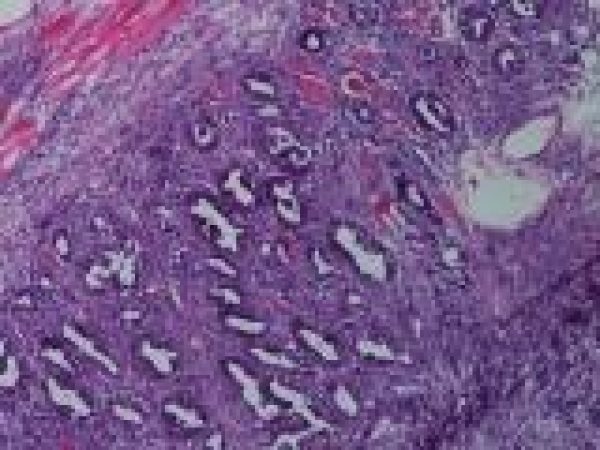AACR Journals Editors’ Picks for November
Every month, the editors from the eight scientific journals published by the American Association for Cancer Research (AACR) select one “must read” article from each issue. Highlighted research encompasses a wide variety of cancer-related discoveries, including basic scientific investigation and epidemiological studies. Read on to learn about this month’s selections, which are freely accessible for a limited time.
Journal: Cancer Discovery
Prediction of DNA Repair Inhibitor Response in Short-Term Patient-Derived Ovarian Cancer Organoids
Approximately half of high-grade serous ovarian cancers (HGSC), which represent the most lethal type of ovarian tumor, harbor DNA repair defects, yet whether these defects impact functional DNA repair remains unknown. In this study, the authors evaluated short-term patient-derived HGSC organoids for defects in homologous recombination (HR) and replication fork protection. The researchers discovered that functional defects in HR were associated with PARP inhibitor sensitivity, while functional defects in replication fork protection were associated with checkpoint kinase 1 (CHK1) and serine/threonine protein kinase ATR inhibitor sensitivity. These results indicate that genomic analysis coupled with the functional testing of organoids can help identify targetable DNA damage repair defects in patients with HGSC.
Journal: Molecular Cancer Research
Prediction of treatment success in patients with retinoblastoma is currently limited to clinical classifications such as tumor size and seeding; new methods to predict eye salvage to avoid enucleation (removal of the eye) is critically needed for this patient population. In this study, the authors evaluated tumor-derived cell-free DNA isolated from the aqueous humor of patients with retinoblastoma during treatment with chemotherapy or enucleation and studied the relationship between somatic chromosomal copy-number alterations (SCNAs) and clinical outcomes. SCNAs were detectable in 92 and 38 percent of enucleated and salvaged eyes, respectively, and the probability of successful ocular salvage was significantly increased in patients without SCNAs, specifically lack of 6p chromosome gain. These results suggest that 6p chromosome gain may be a potential prognostic biomarker for the identification of retinoblastoma patients with poor response to therapy.
Journal: Cancer Epidemiology, Biomarkers & Prevention
Soy Isoflavone Intake and Bladder Cancer Risk in Japan: From the Takayama Study
While previous epidemiological evidence has shown that increased isoflavone intake is associated with lower risk of several cancers, few studies have focused on the association between soy isoflavone consumption and bladder cancer risk. In this prospective study conducted in Japan, the authors investigated the associations of soy and isoflavone consumption with bladder cancer incidence in 14,233 male and 16,584 female subjects. Compared with the lowest quartile of soy intake, estimated hazard ratios for the second, third, and highest quartiles were 0.74, 0.52, and 0.55, respectively, in men, and 0.60, 0.74, and 0.64, respectively, in women, after a mean follow-up of 13.6 years; the results were statistically significant in men, but not in women. These results indicate that consuming soy foods may reduce bladder cancer incidence.
Journal: Clinical Cancer Research (November 15 issue)
Combined BRAF and HSP90 Inhibition in Patients with Unresectable BRAF V600E Mutant Melanoma
While BRAF inhibitors, such as vemurafenib, can be effective in patients with advanced melanoma with BRAF V600 mutations, many develop resistance to this treatment regimen. In this phase I clinical trial, the combination of vemurafenib and the HSP90 inhibitor XL888 was investigated in 21 patients with advanced BRAF V600-mutant melanoma. Of the 20 evaluable patients, 15 had an objective response, and grade 3-4 toxicities included rash (19 percent), cutaneous squamous cell carcinomas (14 percent), and diarrhea (14 percent). Due to the initial clinical efficacy and tolerable side-effect profile of this combinatorial treatment, the authors conclude that the addition of HSP90 inhibition to the current standard-of-care BRAF plus MEK inhibitors in this patient population warrants further evaluation.
Journal: Molecular Cancer Therapeutics
Neurofibromatosis type 2 (NF2) syndrome, a rare genetic disorder commonly associated with benign tumors of Schwann cells, can lead to hearing loss in patients and has an unmet need for treatments. In this study, the authors found that loss of the NF2 gene results in reduced expression of TGFβ receptor 2 and increased expression of TGFβ receptor 1, which in turn activates the MAPK pathway and promotes epithelial-mesenchymal transition. Treatment of NF2-deficient Schwannoma cells with TGFβ receptor 1 inhibitors restored cell differentiation and induced growth suppression, and treatment of NF2-model mice with a specific TGFβ receptor 1 inhibitor reduced tumor formation. The authors conclude that inhibition of unbalanced TGFβ signaling in NF2-related cancers may provide a viable strategy for treatment.
Journal: Cancer Research (November 15 issue)
Postpartum mammary gland involution, or the tissue remodeling event that returns mammary glands to the pre-pregnant state following weaning or in the absence of nursing, has been shown to create a tumor promotional microenvironment. In this study, the authors demonstrate that the GPI-linked protein semaphorin 7a (SEMA7A) is expressed at high levels in tumors induced during involution in preclinical models, and that SEMA7A facilitated lymphangiogenesis by modulating the expression of podoplanin (PDPN) in macrophages. Furthermore, the authors found that a gene signature composed of SEMA7A, PDPN, and the macrophage marker CD68 was associated with worse outcomes in patients with breast, ovarian, lung, and gastric cancers. The authors conclude that SEMA7A may drive metastasis in breast cancer through macrophage-mediated lymphatic vessel remodeling.
Journal: Cancer Immunology Research
Tumor-associated macrophages (TAMs) play a key role in cancer progression, yet their migration patterns have not been fully explored. In this study, the authors investigated the migration of TAMs in mouse tumors and in human surgical samples. They found that TAMs use the protease-dependent mesenchymal mode to migrate into mouse and human tumor tissues. They also found that TAM migration differs from the migration patterns of other leukocytes, including other macrophage populations in non-tumor tissues. In mice, inhibiting TAM migration without inhibiting macrophage migration in non-tumor tissues decreased their accumulation in tumors and resulted in reduced tumor growth. This study elucidates differential migration patterns of TAMs and suggests that inhibiting the migration of TAMs may help control tumor growth in cancer patients.
Journal: Cancer Research (November 1 issue)
p63-dependent Dickkopf3 Expression Promotes Esophageal Cancer Cell Proliferation via CKAP4
The secretory protein dickkopf3 (DKK3) has been shown to promote tumorigenesis in certain cancer types, yet its mechanism of action remains understudied, and cell surface receptors for this protein have not been previously identified. In this study, the authors demonstrated that cytoskeleton-associated protein 4 (CKAP4) acts as a receptor for DKK3, and that this interaction stimulates esophageal cancer cell proliferation; this finding was corroborated in cases of esophageal squamous cell carcinoma (ESCC), where the simultaneous expression of DKK3 and CKAP4 was associated with poor prognosis. The addition of an anti-CKAP4 antibody inhibited xenograft tumor formation induced by ESCC cells, and knockdown of the transcription factor p63 decreased the expression of DKK3 in ESCC cells while deletion of p63 increased the size of tumor-like esophageal organoids. The authors conclude that inhibition of the DKK3-CKAP4 axis may be a viable therapeutic strategy for the treatment of ESCC.
Journal: Clinical Cancer Research (November 1 issue)
While targeted therapy has proven efficacious in some Philadelphia-positive (Ph+) leukemias, many patients develop resistance to these treatments due to mutations in the drug target, and more research is needed to understand the landscape of drug resistance mutations in this setting. Here, the authors integrated single-molecule duplex sequencing with computational simulations to predict which patients harbored preexisting resistance mutations in the ABL1 gene. While most patients with chronic myeloid leukemia were not predicted to harbor ABL1 resistance mutations, many patients with Ph+ acute lymphoblastic leukemia (ALL) were susceptible to compound mutations due to prior use of an ABL1 inhibitor. These results suggest that early use of pan-targeted therapies may improve outcomes for patients with Ph+ ALL by forestalling the onset of resistance.

Preexisting resistance mutations could be present in the tumor before therapy (left) or resistance mutations could arise as a result of treatment (right).
Journal: Cancer Prevention Research
Pancreatic cancer remains a hard-to-treat malignancy, with a five-year survival rate under 9 percent, according to recent statistics. Most diagnoses of pancreatic ductal adenocarcinoma (PDAC) are in individuals over the age of 65; those diagnosed under the age of 60 are considered to have young-onset PDAC and may have a genetic predisposition for the disease. In this study, researchers sought to determine the prevalence and landscape of germline mutations and their influence on prognosis in young patients with PDAC. Compared with older patients, patients with young-onset PDAC had a significantly higher prevalence of germline mutations, and patients with germline mutations had better overall survival compared to patients without mutations. The authors advocate for the encouragement of genetic counseling and testing in PDAC patients, particularly those of young onset, as well as their family members.



